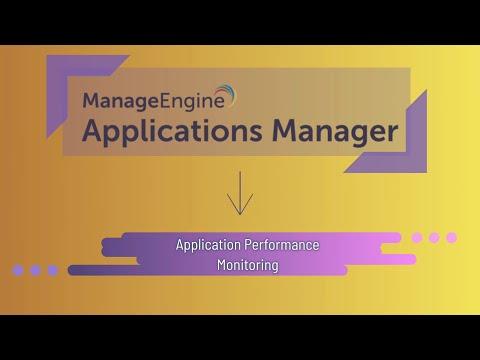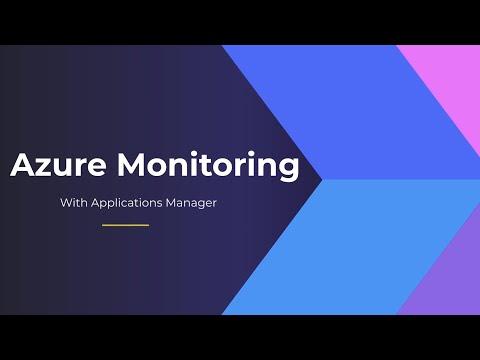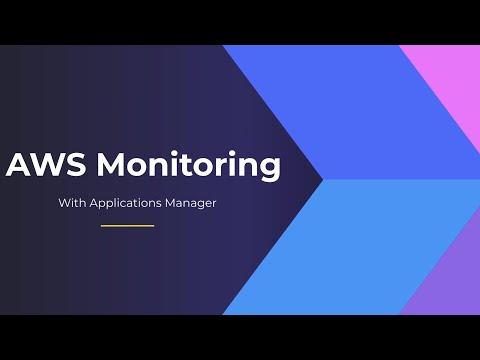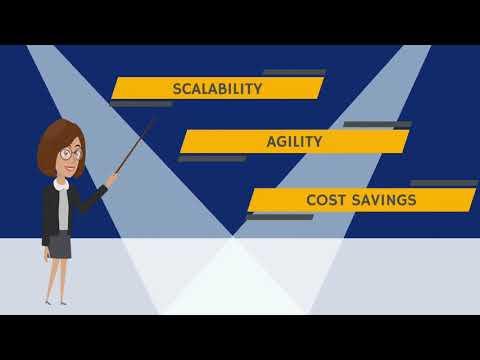In 2013, APMdigest published a list called 15 Top Factors That Impact Application Performance. Even today, this is one of the most popular pieces of content on the site. And for good reason – the whole concept of Application Performance Management (APM) starts with identifying the factors that impact application performance, and then doing something about it. However, in the fast moving world of IT, many aspects of application performance have changed in the 3 years since the list was published. And many new experts have come on the scene. So APMdigest is updating the list for 2016, and you will be surprised how much it has changed.
Start with Top Factors That Impact Application Performance 2016 - Part 1
Start with Top Factors That Impact Application Performance 2016 - Part 2
Part 3 of this list covers how the application interacts with the backend and the front end.
14. DATABASE
According to data from Gleanster Research, nearly 90 percent of application performance issues are related to the database layer. This is due to a number of factors — databases are at the heart of most applications; they are complex; they are difficult to scale horizontally; and last but not least, most operations teams have little to no visibility into what goes on inside them. Thankfully, solving that fourth challenge can help solve the others, too. Many database performance tools report that a query from a certain application may be slow, but they don't always show why or how to fix the problem. As a result, many IT departments often provision a larger database server or pay for faster storage. However, this doesn't always solve the problem. A better approach is to use wait time-based analytics to identify and solve database-related application performance bottlenecks.
Gerardo Dada
VP, Product Marketing and Strategy, SolarWinds
Database latency has a huge impact. Most applications have a database backend, and in some cases they can be very big, and the queries made against them very complicated, with many users hitting them constantly, and at the same time. The technology is available, with Hadoop, clusters, elastic scaling, etc., to improve database performance. Some enterprises like Google and Facebook are on top of that, but they have gazillions of dollars, which most enterprises do not. And many enterprises have too much legacy code to replace it all in one fell swoop, if ever, without starting from scratch.
Chris Bloom
Senior Manager, Technical Alliances, Savvius
Ensuring application availability is much more than up/down monitoring, as today's users demand near instant response no matter the device or network. While application front ends and back ends vary widely by application type, what almost all have in common is their dependency on transactional databases. To truly understand application performance, one must analyze database workloads in application context, from user response time to SQL response time. The strongest application teams use an APM tool that provides this context in one unified view.
Robert Anderson
VP of Product Management, Idera
The database has the distinct honor of being both overly blamed and often overlooked as the source of application performance problems. App developers will often blame the database for poor performance, when in fact close inspection shows that poorly written queries can be the true source of the problem. On the other hand, when an application experiences rapid growth in demand, the database may indeed become the genuine bottleneck. Most other parts of the infrastructure can scale more easily than the database. Scaling out – where the application makes use of multiple database servers simultaneously for scaling reads – is difficult at the application layer, requiring recoding to take advantage of readable secondaries. Technology that offloads the application, such as database load balancing software, can speed application performance, so organizations no longer have to modify the application for scale out or other performance-enhancing features like caching or connection management.
Michelle McLean
VP of Marketing, ScaleArc
15. DATA
Keep a watchful eye on the amount of data moving between tiers. Even after all these years, there are many applications that are still sending huge amounts of JSON or XML data to the front end to fill a huge multi-page table. Instead, IT should rewrite the UI to only request the pages of data it needs. The good news is most UI toolkits have a pattern to handle this.
Jim Cashman
Senior Product Manager, Ipswitch
16. BACKEND CALLS
In my experience, the number one factor that affects application performance is the backend calls the application makes. Whether it is a Database call or a HTTP call (such as SOAP, REST), or any other numerous types of backend calls, poorly performing backend can degrade application performance to a great extent. Adequate monitoring is critical for diagnosing this type of issues, as it may not be readily apparent at first.
Karun Subramanian
Application Support Expert, www.karunsubramanian.com
Plumbr have recently published the results of their quantitative study on top factors that impact application performance. This research was based on user experience data from more than a thousand real-world production applications running on the Java Virtual Machine. We found the top three culprits to be blocking calls to external web services, lock contention issues and slow database calls.
Priit Potter
Co-founder and CEO, Plumbr
17. BACKEND MODIFICATIONS
Among the various factors that influence application performance, one of the most critical is the performance (speed and reliability) of back-end transactional systems. According to a recent EMA survey, IT professionals cited "rapid growth in transaction usage taxes back-end capacity" as a top application support challenge. When it comes to optimizing application performance, many organizations are focused on front-end platforms, like customer-facing e-commerce systems. But these "systems of engagement" can only be as fast and reliable as the back-end "systems of record" supporting them. Essentially, multi-platform applications make these all one, unified system. Due to the sheer volume of users impacted, slight back-end modifications can have a significant positive or an equally negative impact on end users' experiences with transactional applications. Organizations need unified DevOps to ensure that a potential change does not produce unintended consequences.
Spencer Hallman
Product Manager, Compuware
18. SOCIAL MEDIA AND MARKETING OVERHEAD
Do you ever wonder why when you want to check the local weather on your favorite website it takes well over the 6-8 second threshold to render completely, which is more like 30 -50 seconds when you time it? This goes for all of the popular quick hit social media and informational sites with high traffic volumes. The banner adds, click tracking, and java client-side scripts running to create web trending metrics have created such an overhead that we continue to rely on Moore’s law and upgrade to the newest device or PC when it comes out. It’s crazy when you consider the extra overhead being imposed on us to track everything we do. That’s why it’s important to establish baselines on performance no matter how simple the monitoring may seem. If you know what “normal” looks like, it will actually pay dividends when trying to figure out if you have a problem with your application or not.
Larry Dragich
Director of Customer Experience Management at the Auto Club Group and Founder of the APM Strategies Group on LinkedIn.
19. DEVICE HEALTH
Performance and health of the broad range of end user devices … The average workforce end user relies on three or more devices to access business critical applications throughout their day – smartphone on their commute, laptop or PC in the office, tablet when interacting with customers. Application performance must be of consistently high quality so the user can navigate seamlessly between these devices as they conduct their business. And designing mobile apps for the broad range of consumer devices is a well-known challenge. Therefore, one of the top factors that impacts application performance is the performance and health of the broad range of end user devices used to access them
Mike Marks
Chief Product Evangelist, Aternity
Just from my own experience over the past week and having to work a lot more while on-the-go, it's clear that with the increase of the number of users interfacing via mobile devices such as tablets, smartphones and a growing number of IoT connected devices, that mobile apps, desktop apps and most any service accessible via desktop now also has to be designed with "mobile" platforms in mind. This changing factor warrants added focus on maintaining a consistent end-user experience across devices with a medley of screen resolution, memory, processing power and operating system combinations. Even further, this creates added demand on back-end resources with this upsurge in popularity of smart devices.
Hayden James
Linux Systems Analyst, haydenjames.io
Read Top Factors That Impact Application Performance 2016 - Part 4 covering the application itself.
The Latest
Industry experts offer predictions on how NetOps, Network Performance Management, Network Observability and related technologies will evolve and impact business in 2025 ...
In APMdigest's 2025 Predictions Series, industry experts offer predictions on how Observability and related technologies will evolve and impact business in 2025. Part 6 covers cloud, the edge and IT outages ...
In APMdigest's 2025 Predictions Series, industry experts offer predictions on how Observability and related technologies will evolve and impact business in 2025. Part 5 covers user experience, Digital Experience Management (DEM) and the hybrid workforce ...
In APMdigest's 2025 Predictions Series, industry experts offer predictions on how Observability and related technologies will evolve and impact business in 2025. Part 4 covers logs and Observability data ...
In APMdigest's 2025 Predictions Series, industry experts offer predictions on how Observability and related technologies will evolve and impact business in 2025. Part 3 covers OpenTelemetry, DevOps and more ...
In APMdigest's 2025 Predictions Series, industry experts offer predictions on how Observability and related technologies will evolve and impact business in 2025. Part 2 covers AI's impact on Observability, including AI Observability, AI-Powered Observability and AIOps ...
The Holiday Season means it is time for APMdigest's annual list of predictions, covering IT performance topics. Industry experts — from analysts and consultants to the top vendors — offer thoughtful, insightful, and often controversial predictions on how Observability, APM, AIOps and related technologies will evolve and impact business in 2025 ...
Technology leaders will invest in AI-driven customer experience (CX) strategies in the year ahead as they build more dynamic, relevant and meaningful connections with their target audiences ... As AI shifts the CX paradigm from reactive to proactive, tech leaders and their teams will embrace these five AI-driven strategies that will improve customer support and cybersecurity while providing smoother, more reliable service offerings ...
We're at a critical inflection point in the data landscape. In our recent survey of executive leaders in the data space — The State of Data Observability in 2024 — we found that while 92% of organizations now consider data reliability core to their strategy, most still struggle with fundamental visibility challenges ...










